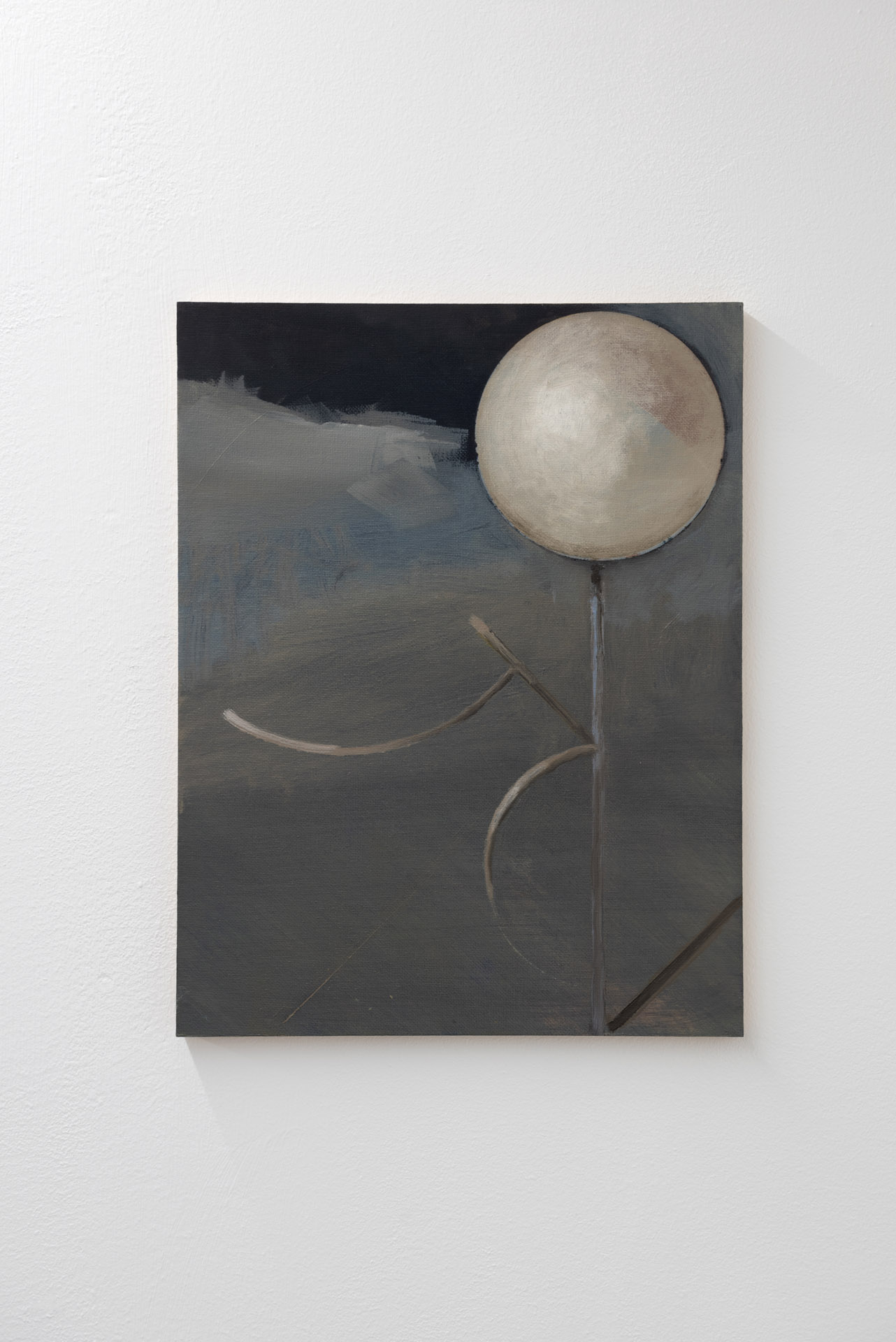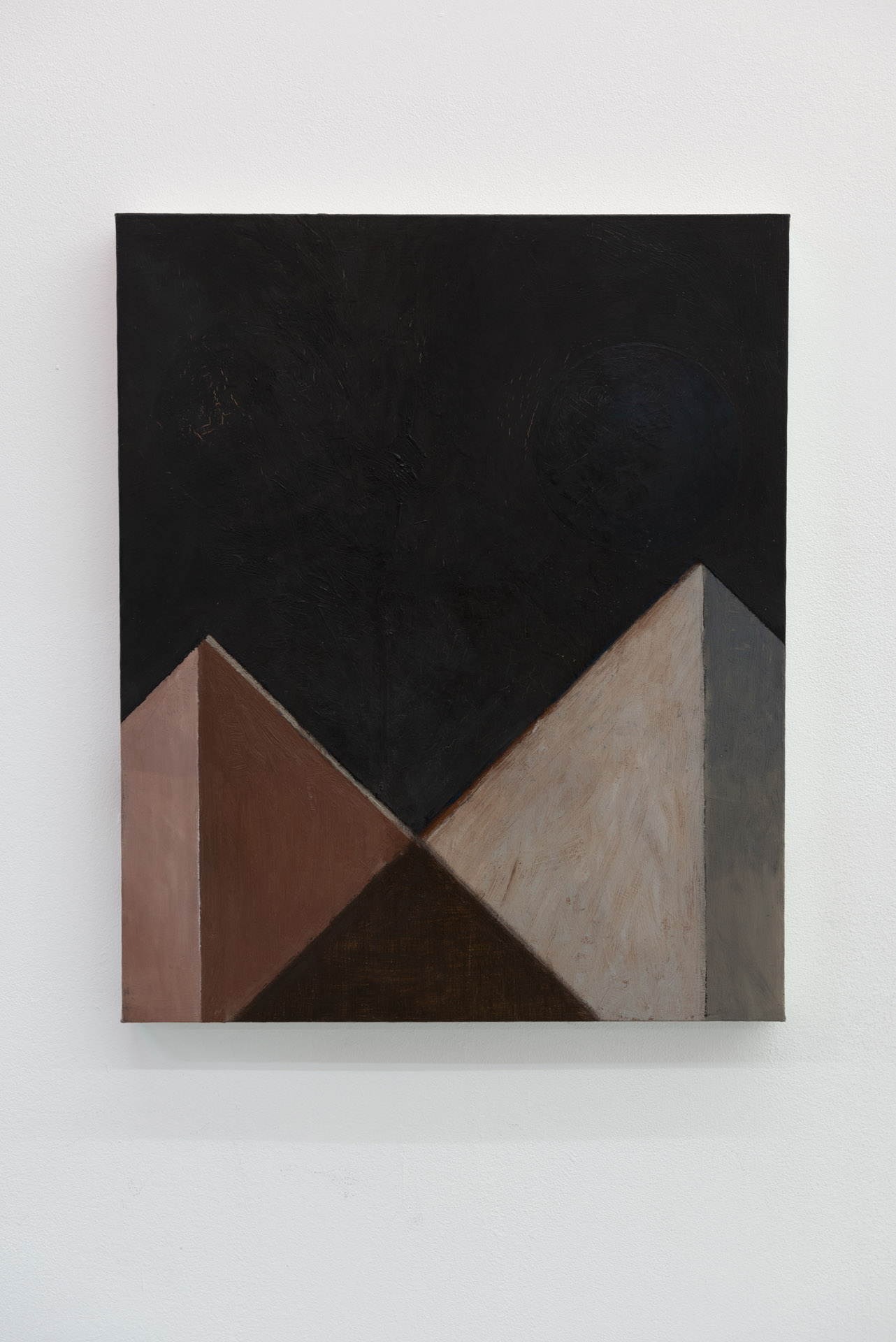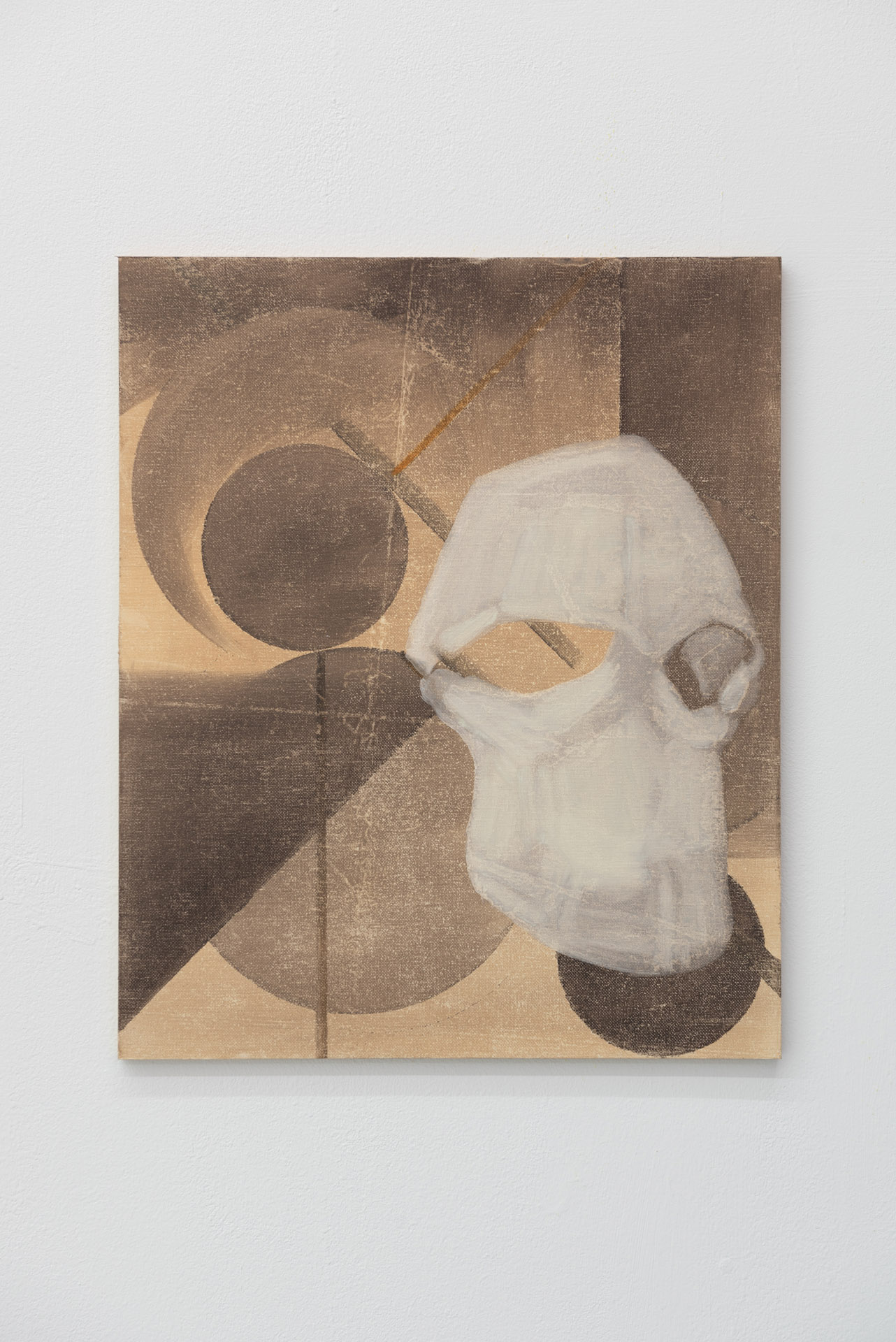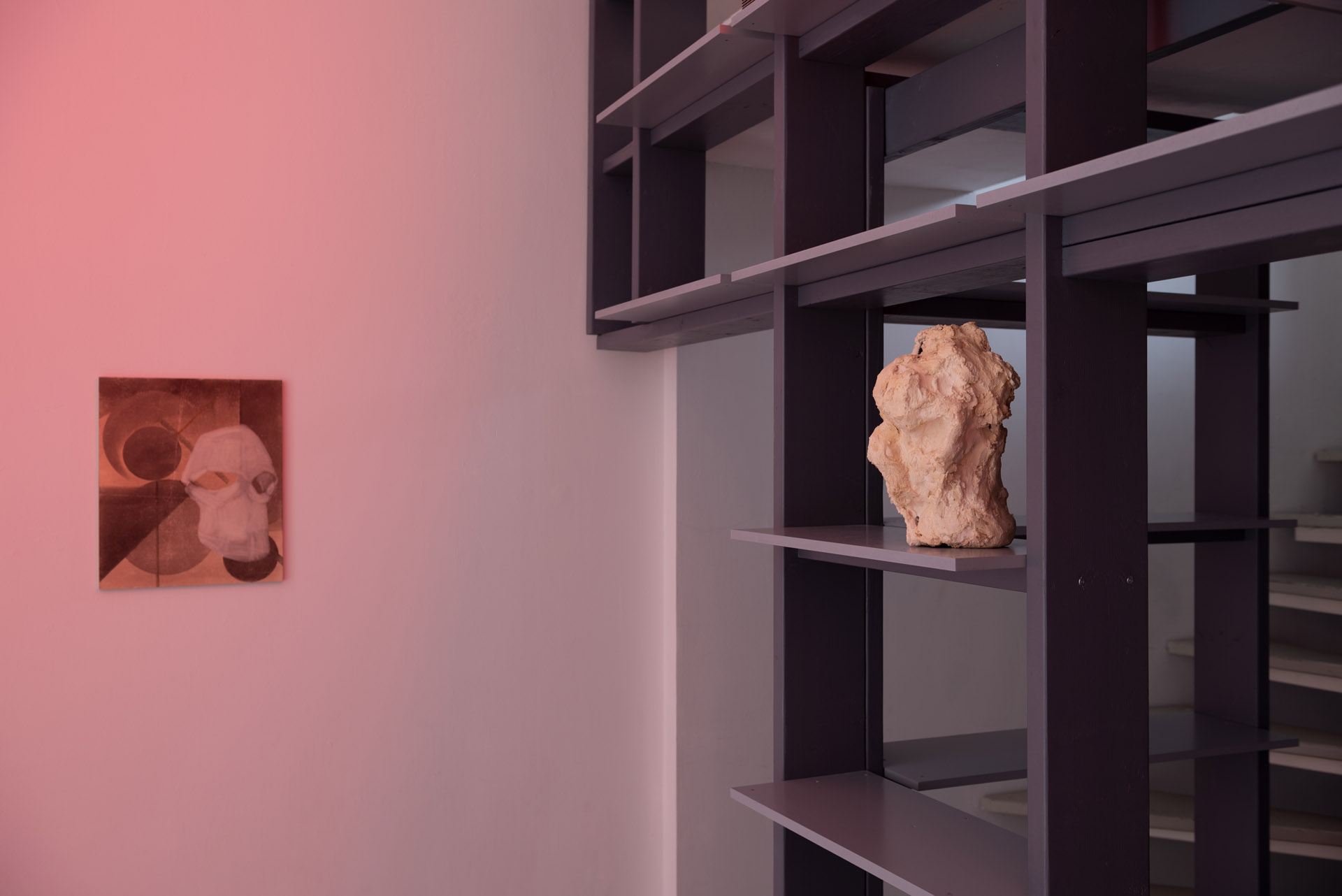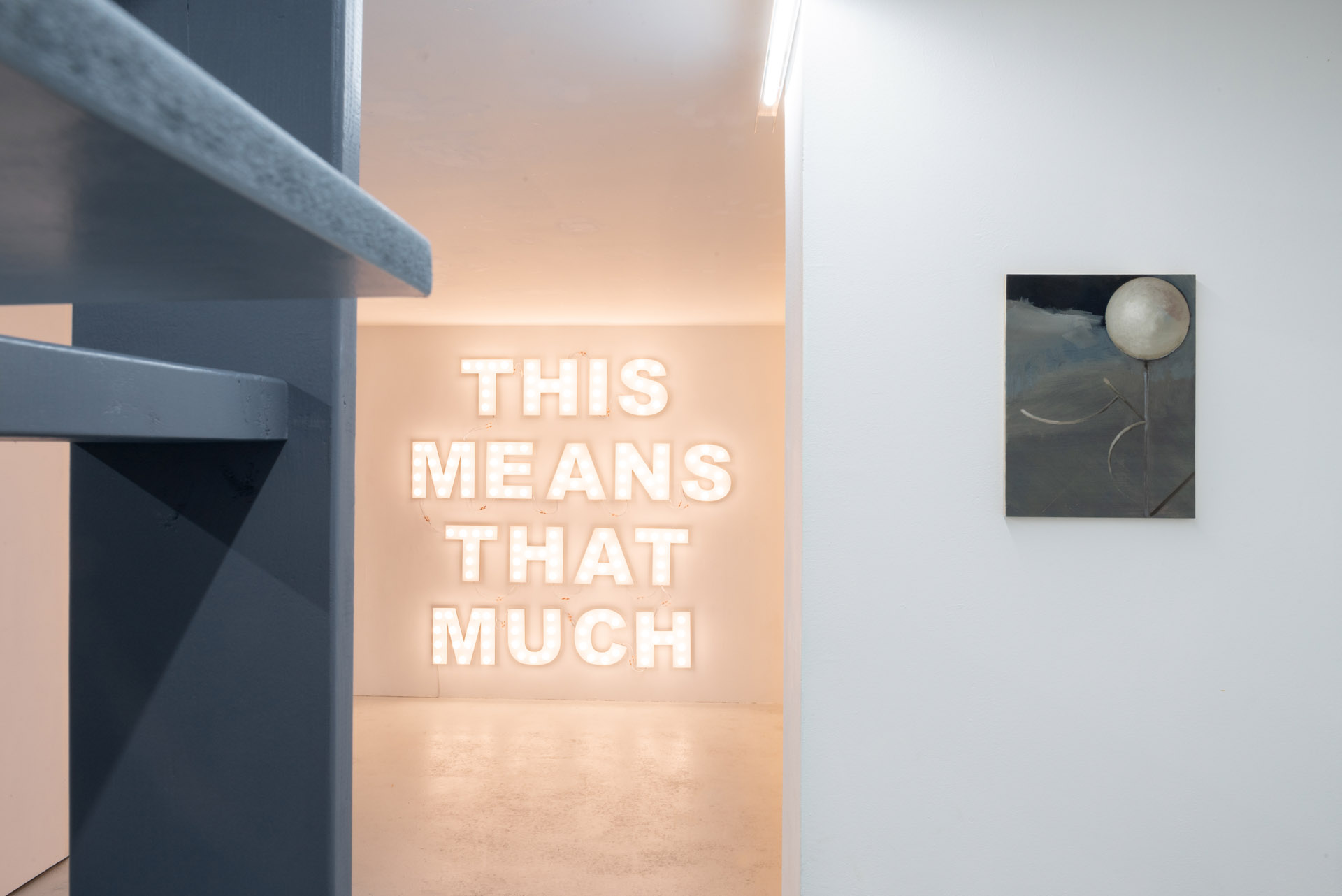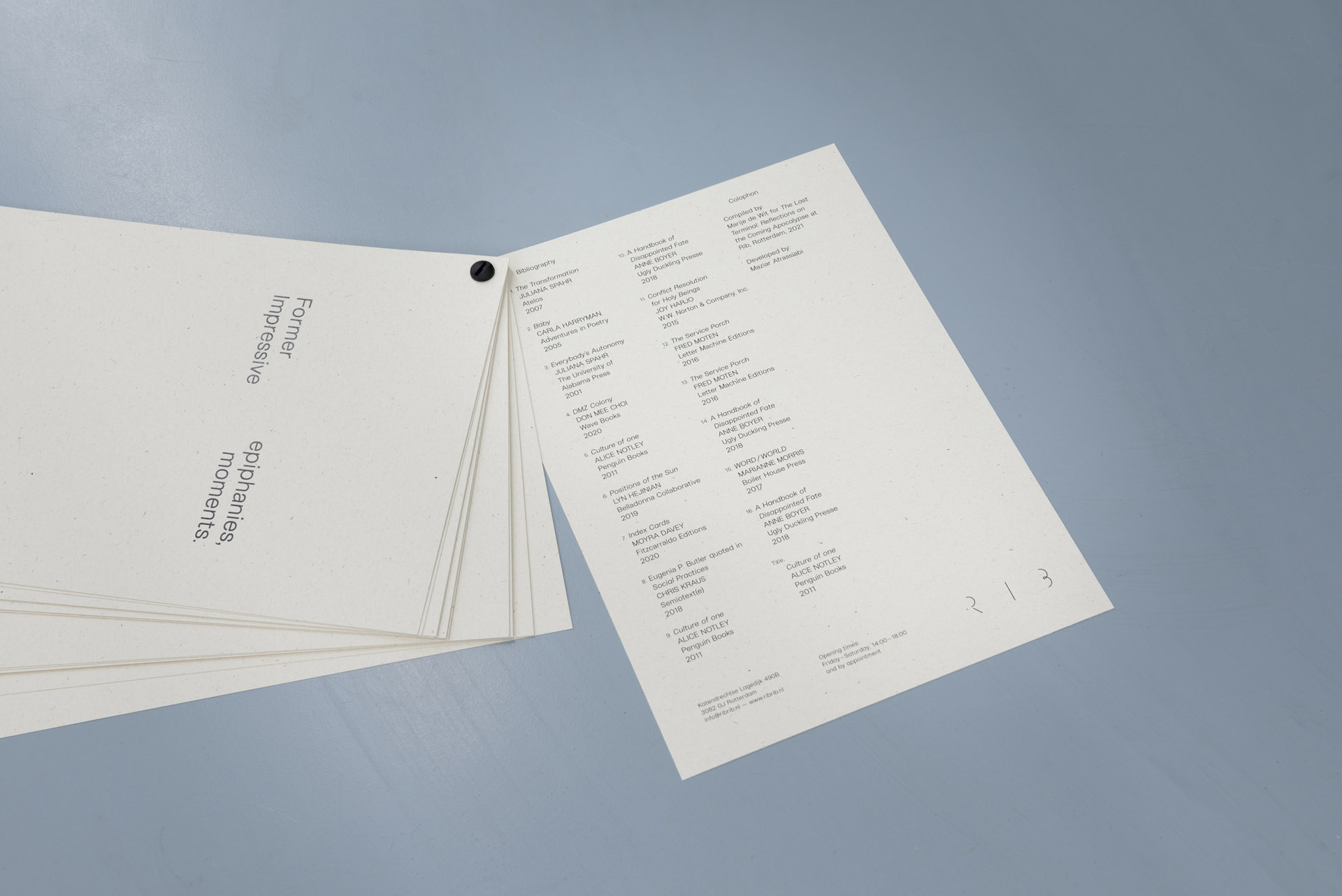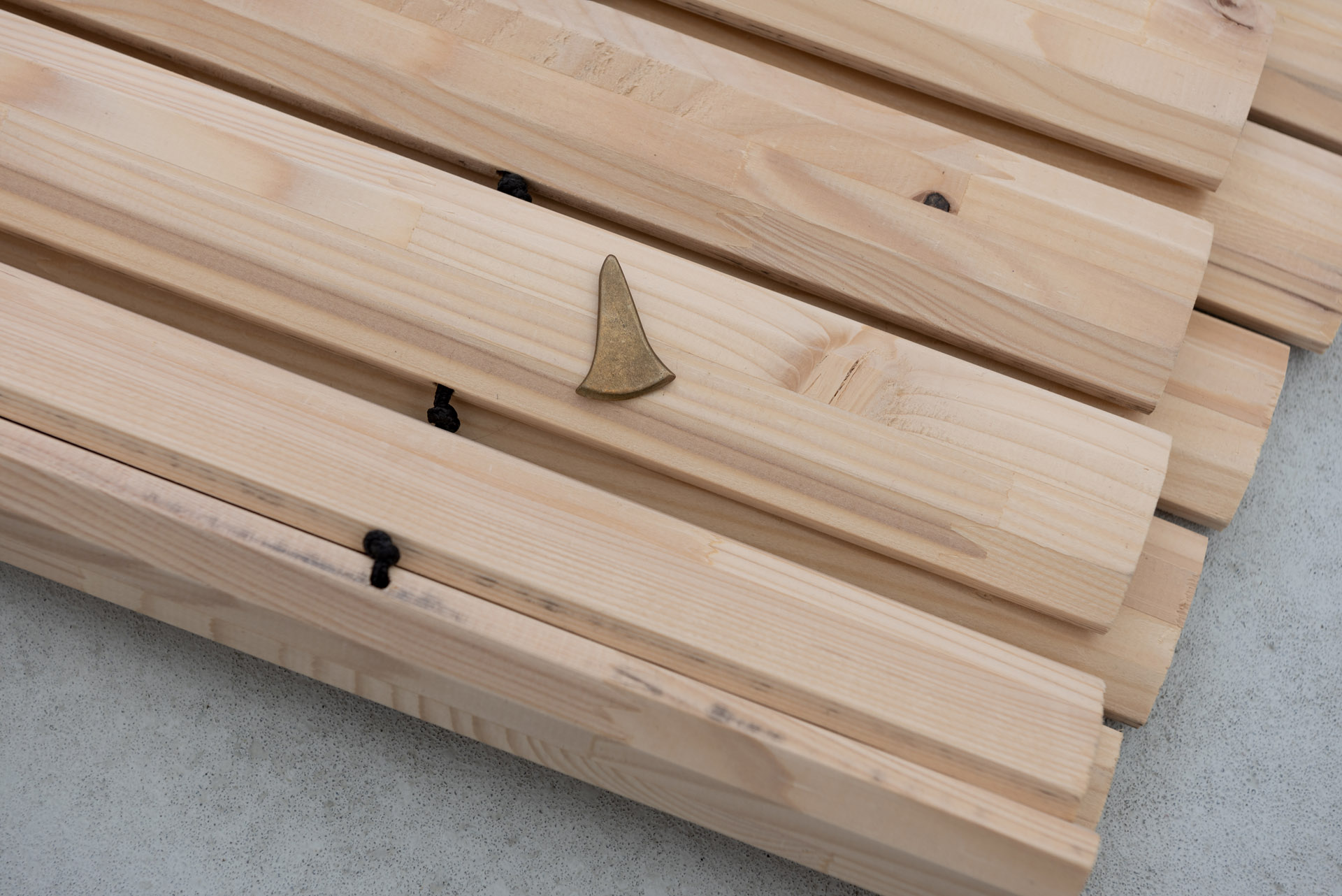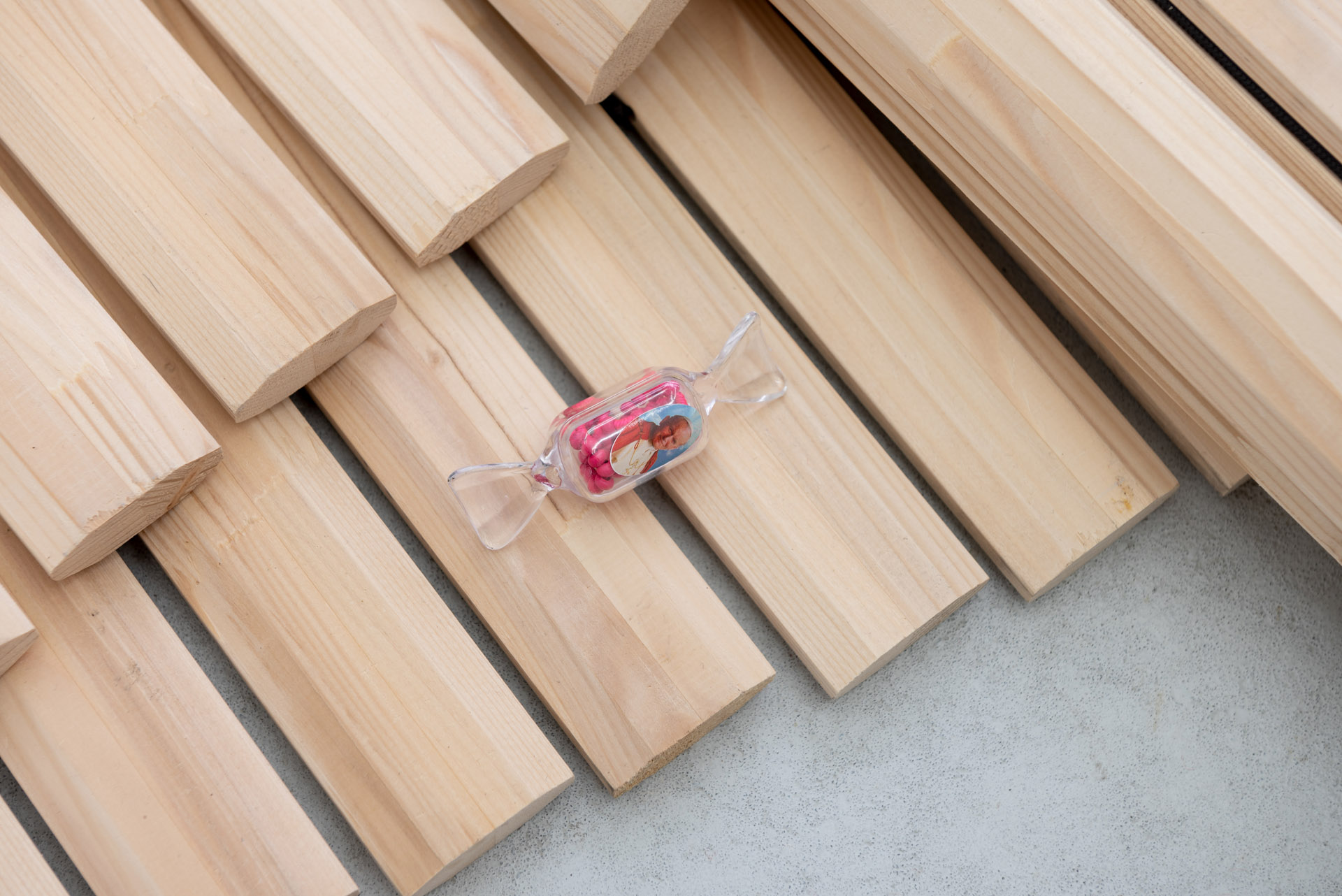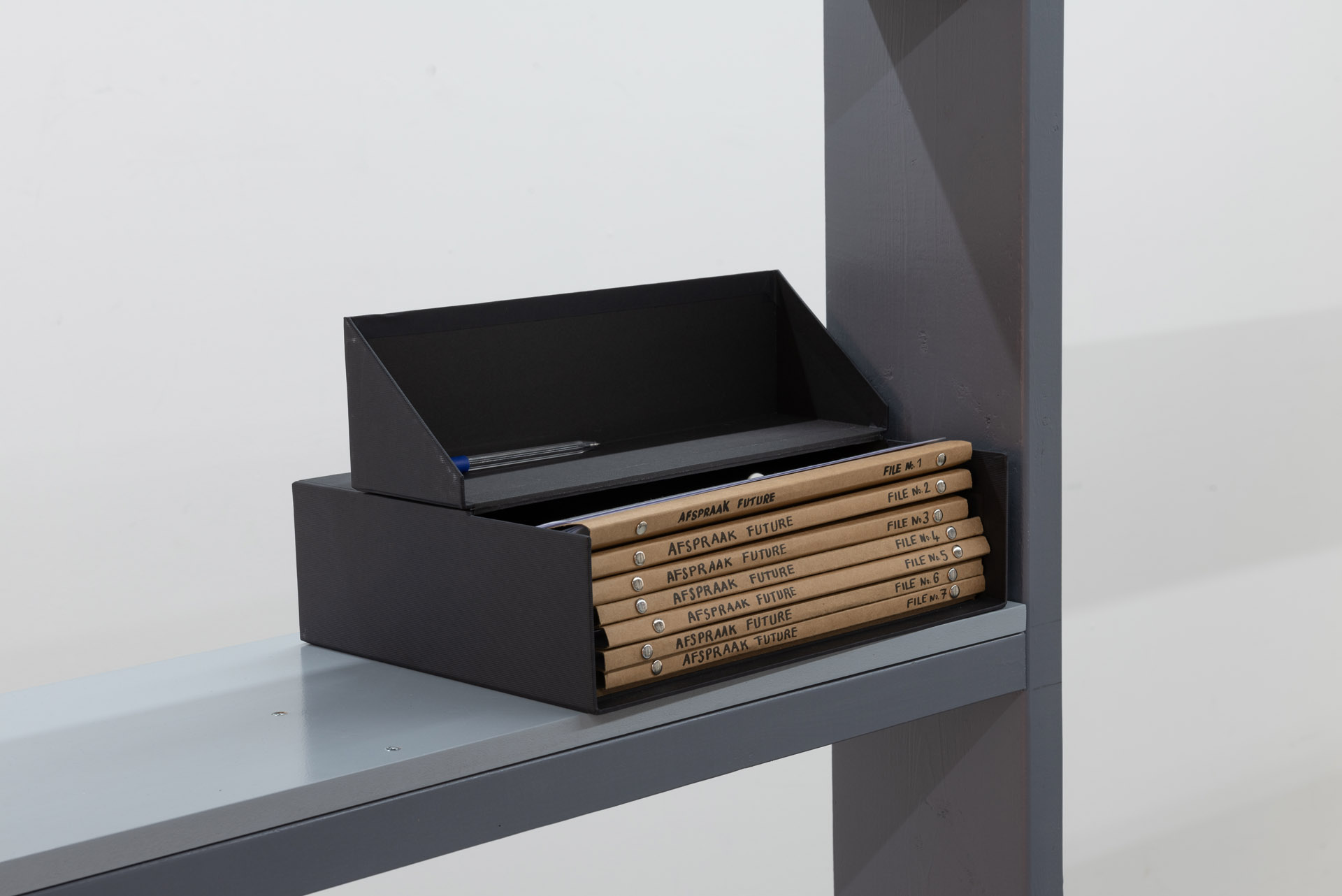Contributors: Marije de Wit, Shahin Afrassiabi and Eleonore Pano-Zavaroni inviting Romain Bobichon, Fabrice Croux, Danaé Jérome, Ash Kilmartin, Akim Pasquet, Jérôme Tillié and Maziar Afrassiabi
Exhibition title: The Last Terminal: Reflections on the Coming Apocalypse (Part 1 — Survival of the Fittest: the big toe of little big man)
Curated by: Maziar Afrassiabi
Venue: Rib, Rotterdam, The Netherlands
Date: November 26, 2021 – February 5, 2022
Photography: Lotte Stekelenburg / all images copyright and courtesy of the artists and Rib, Rotterdam
In the last few weeks, we experienced Mathew Kneebone’s work, Power Relations, which together with Olivier Goethals’ scenography, introduced the program as a liminal space. Kneebone’s news headlines followed more or less daily and will continue for the unforeseeable future. Premonitions of a coming, significantly catastrophic event in California and isolated from their local news context. With their dream logic language, they are poetic anticipations of what is yet to happen: Rib will imminently switch off. Connection between two places is established through disconnection.
Being connected to all counties in California, we had two blackouts occurring in the space last month, due to storms, floods, and mismanagement, that forced us to wear warm clothes and to charge our batteries before we entered Rib; to light candles that coincidentally helped us mourn the dead. Neighbors complained that they can’t sleep because of the bright lights in the space reaching their bedrooms, because when the power returned we were not there to switch the lights off. During the blackouts works on display were turned off and the black screen of the monitors displayed the reflection of a wanting visitor, instead of the source material: the films of Albert Lamorisse.
Head of a young man
In a recent conversation with Shahin Afrassiabi he talked about his fascination with the distinction between the allegorical method of interpretation versus the literal one originally related to the hermeneutics of the bible and had speculated about the way this distinction relates to his own painting and sculpture.
In his paintings, the same figures, such as circles, spheres, vertical lines, reappear in different constellations each time depicting different real-world things. The repetition of these forms is a constant reminder of the paintings’ hard reality as object and surface yet they also seduce one into an emotional flirt with invented spaces and objects. Mountains, faces, flowers, dark moods, colors, surface textures, degrees of depth, and shadows are weirdly both present and absent; the surface and the image equally inhabit the work complicating hierarchical distinctions between subject and object. The plaster head sculptures are also all variations of a certain inarticulate head. Inarticulate in so far as they approximate a head but never quite fully concretize its specifics.
This Means That Much
Marije de Wit speculates in her work what an image or a sculpture can be today in terms of its autonomy, functionality, or decorativity. Traditional understandings and categories, that enable her to not only look at the fundamentals of sculpture and image less statically but also to question the self-evidence of our surrounding world in how we come to define and value things. The dominance of quantification and objectification in art and life underlies her motivation to reclaim space for subjectivity and ambiguity. For things to have the right to exist and to have validity prior to their explanation.
In recent years she has been exploring the relationship between art and critique in creative writing, art writing, and criticism by poets, artists, critics, and other thinkers. For The Last Terminal, she has made a site-specific work that as she put it, ‘calls for the safeguarding of the inexplicable’, a light work that is also subject to the whims of Mathew Kneebone’s intervention Power Relations titled: This Means That Much.
She also has compiled a carefully selected number of paragraphs from her collection of readings, into a reader that reacts to the ideas that have gone into the program as a whole.
Afspraak Future
Eléonore Pano-Zavaroni presents a work, that is an enhanced version of her Afspraak piece from 2019 at Rib, still a collaborative tool, yet only targeting those who express their full commitment to its cause as if their life depended on it. The general public is then a witness to these intense exchanges until they decide to leave the realm of spectatorship and come closer. Afspraak Future: About some magical virtues, includes contributions by seven artists that Zavaroni hand-picked and invited, whose contributions she describes as ‘things-of-unstable-status’, for which she has made a foldable/ unfoldable placeholder she calls the flying carpet, referring to a scene from the movie The Lover’s Wind from the French film director Albert Lamorisse. In this scene, Lamorisse’s unseen helicopter personifying the lover’s wind blows and scatters Persian carpets on a hill that are laid out by locals to be washed and dried.
The artists invited by Pano-Zavaroni are Romain Bobichon, Fabrice Croux, Danaé Jérome, Ash Kilmartin, Akim Pasquet, Jérôme Tillié and Maziar Afrassiabi.
Overview Part 1: Survival of the Fittest: the big toe of little big man With works by Marije de Wit, Olivier Goethals, Mathew Kneebone, Shahin Afrassiabi and Eleonore Pano-Zavaroni inviting Romain Bobichon, Fabrice Croux, Danaé Jérome, Ash Kilmartin, Akim Pasquet, Jérôme Tillié and Maziar Afrassiabi, November 2021
Overview with blackout, Part 1: Survival of the Fittest: the big toe of little big man, November 2021
Shahin Afrassiabi , left to right: The shaping spirit, oil on canvas 2021, Upon approaching an insect, oil on canvas 2021, Three yellow orbs, oil on canvas 2019
Shahin Afrassiabi, Ruin the world, oil on canvas 2019
Shahin Afrassiabi, The shaping spirit, oil on canvas 2021
Shahin Afrassiabi, Upon approaching an insect, oil on canvas 2021
Shahin Afrassiabi, Three yellow orbs, oil on canvas 2019
Shahin Afrassiabi, Tronie (Thomas Housego), oil on canvas on wood 2019
Shahin Afrassiabi, Balzac, plaster 2021
Shahin Afrassiabi, Head of a young man, oil on plaster 2021
Shahin Afrassiabi, Many heads, plaster chicken wire 2021
Shahin Afrassiabi during a blackout, Many heads, plaster chicken wire 2021
Shahin Afrassiabi overview, during a blackout
Marije de Wit, Shahin Afrassiabi, overview
Marije de Wit, This means that much, lightbulbs, wood, electric wire, 2021
Marije de Wit, Albert Lamorisse, overview
Albert Lamorisse, Olivier Goethals, overview
Marije de Wit, Former epiphanies, Impressive moments, reader with quotes, 2021
Marije de Wit, Former epiphanies, Impressive moments, reader with quotes, 2021
Afspraak Future, Eleonore Pano-Zavaroni inviting Romain Bobichon, Fabrice Croux, Danaé Jérome, Ash Kilmartin, Akim Pasquet, Jérôme Tillié and Maziar Afrassiabi, November 2021
Afspraak Future, Eleonore Pano-Zavaroni, detail
Afspraak Future, Eleonore Pano-Zavaroni, detail
Afspraak Future, Eleonore Pano-Zavaroni, detail
Afspraak Future, Eleonore Pano-Zavaroni, detail
Afspraak Future, Eleonore Pano-Zavaroni, detail
Afspraak Future, Eleonore Pano-Zavaroni, detail
Afspraak Future, Eleonore Pano-Zavaroni, detail
Afspraak Future, Eleonore Pano-Zavaroni, detail
Afspraak Future, Register of sensations and projections, Eleonore Pano-Zavaroni, 2021
Afspraak Future, archive, Eleonore Pano-Zavaroni, 2021
Overview during blackout, Power relations, Mathew Kneebone 2021





